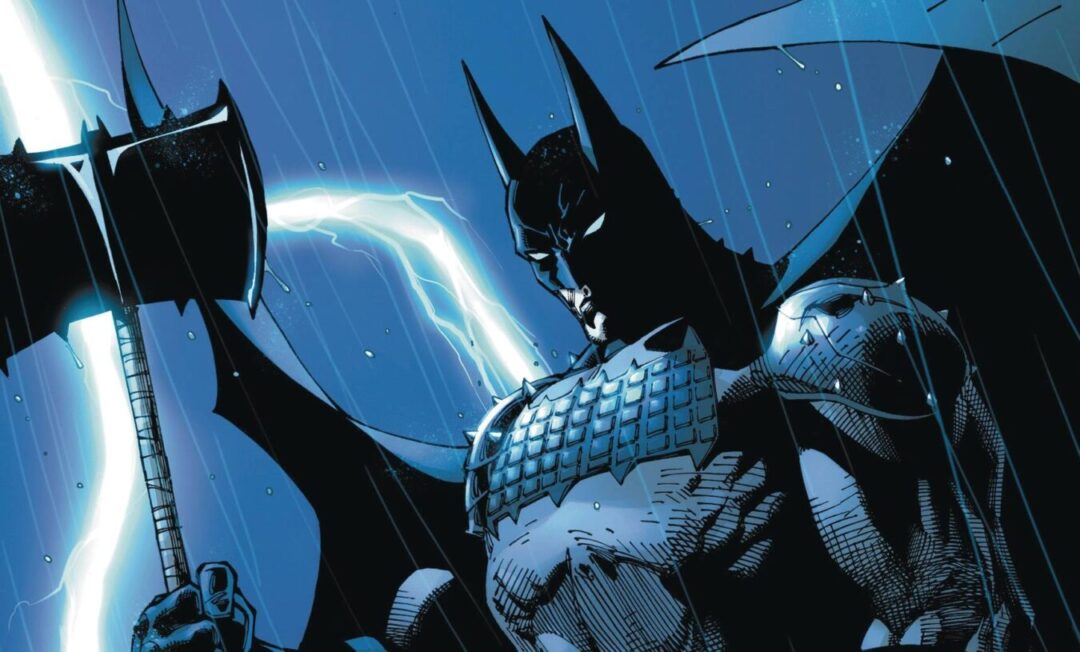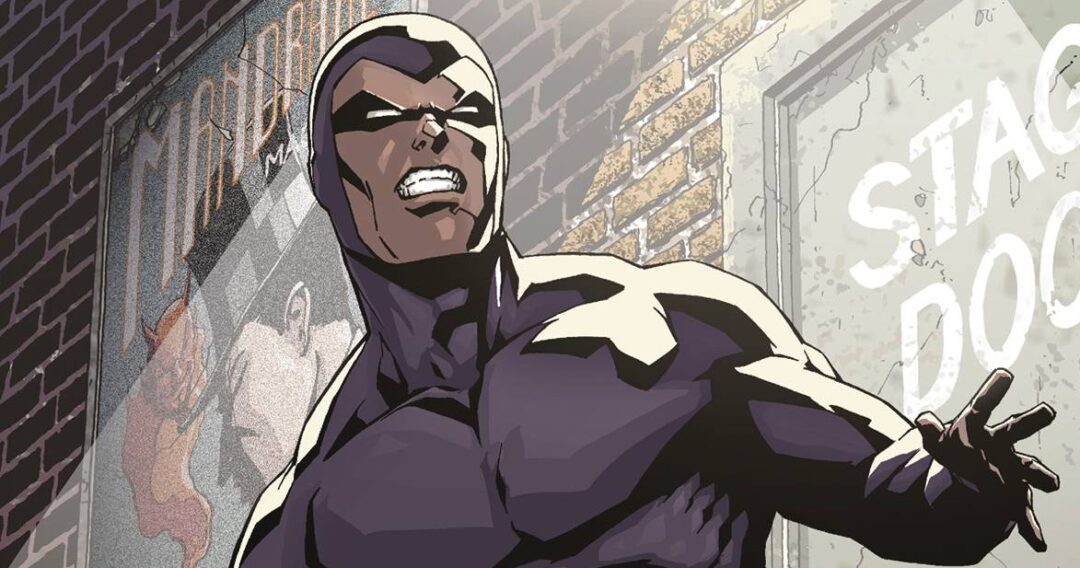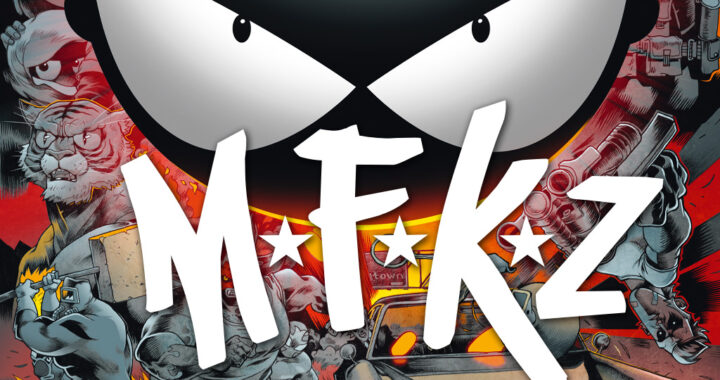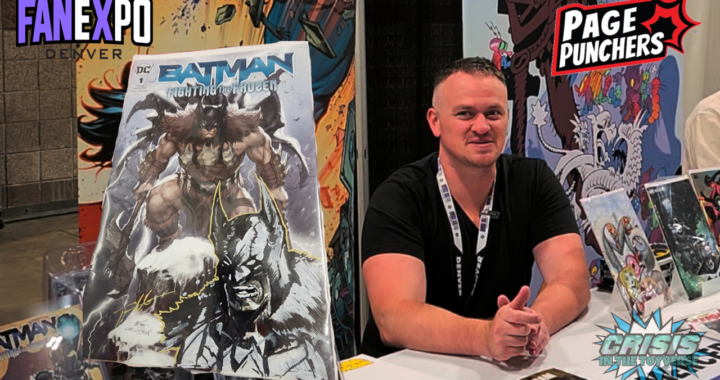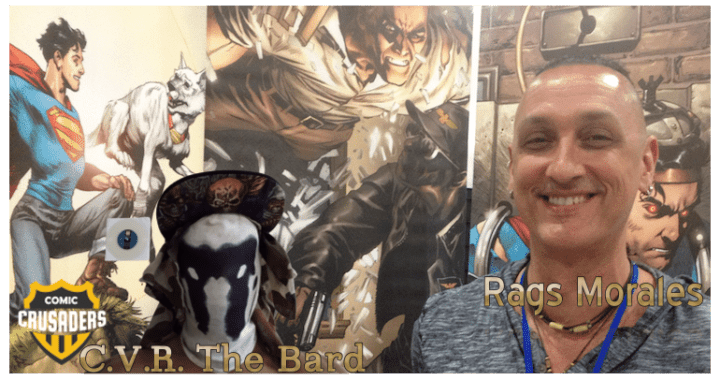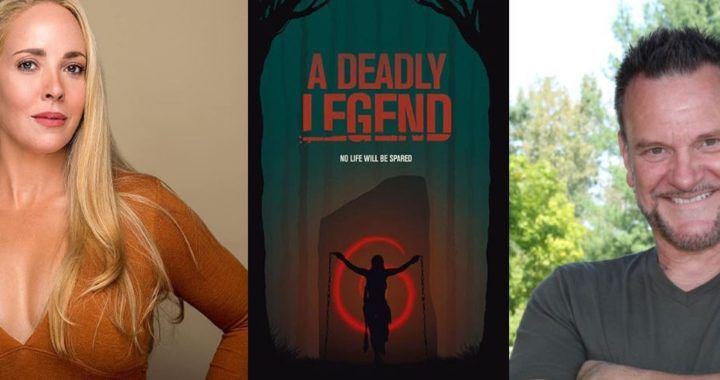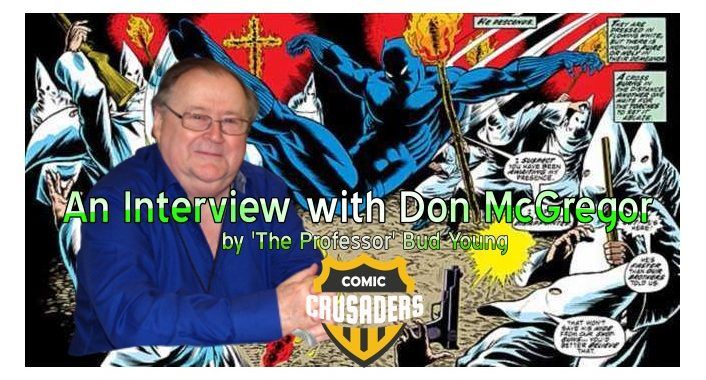
Interview: Spilling Brooklyn Blood with Writer Paul Levitz and Artist Tim Hamilton
 This week sees the highly regarded Brooklyn Blood from Dark Horse, originally served up in DHP, get the trade paperback treatment.
This week sees the highly regarded Brooklyn Blood from Dark Horse, originally served up in DHP, get the trade paperback treatment.
On the cusp of the release we caught up with writer, who also held numerous roles in DC, Paul Levitz and self published artist of Rabbit Who Fights, Tim Hamilton, to discuss PTSD, storytelling, the comic industry and which of the many character Paul created is his favourite:-
Comic Crusaders: Guy, thanks for taking the time out to talk to me. Lets start with the usual stuff; how did the the two of you meet and end up contributing on this project?
Paul Levitz: When I developed the idea for BROOKLYN BLOOD, I was looking for an artist who could do both realistic scenes and haunting ones, and ideally who knew Brooklyn. My friend Christine Norrie suggested I look at Tim“s work on FAHRENHEIT 451, and it convinced me he“d be great. I pitched him the idea, and happily, he signed on.
Tim Hamilton: I guess Paul answered this mostly. I“d like to add that I do other illustration work besides comics, and that a book like Dark Horse Presents allowed me to create 8 pages a month while I did other work! That was also a big sell for me. I“m no longer a guy who draws 24 pages of a monthly comic like I did at one time during the booming 90“s!
CC: How did you manage to interweave the various threads, PTSD, crime, Brooklyn and the supernatural, both through the story and the art?
PL: Lives have many threads in them, don“t they? When you start telling a story, you“re unravelling someone“s life, and you discover parts that you didn“t initially plan on. Building out the life of Bill O“Connor, the lead detective in BROOKLYN BLOOD, led naturally to his time in Afghanistan, and PTSD as part of the price of his service. Interweaving fantastic elements with realistic ones is an even bigger challenge for artists than writers, and I was thrilled to see how Tim was able to bring in the supernatural visuals without losing the fundamental reality of the story.
TH: Again this is more Paul“s territory, but it took place in Brooklyn and I love researching history. I learned a lot more about history than is used in the story. Plus, I love creating creatures-fantasy elements as much as I love illustrating the real world.
 CC: PTSD plays a massive part in the story; mental health awareness is getting better, yet still has a ways to go. What impact are you hoping to make with this story?
CC: PTSD plays a massive part in the story; mental health awareness is getting better, yet still has a ways to go. What impact are you hoping to make with this story?
PL: We“re still learning about PTSD, though mercifully we“re treating it with a bit more dignity and reality than, say, the ”˜shell shock“ which was my great-grandmother“s diagnosis a hundred years ago. If we can make an impact, it would be nice to have people more sympathetic to the plight of so many of our returning soldiers. The resources devoted to reintegrating them into civilian society are grossly inadequate.
CC: Paul, you have worked for DC for so long, why the jump to indie books and why now?
PL: For much of my career my contracts didn“t allow me to branch out as a writer. I had long promised my old friend Mike Richardson my first non-DC comics writing, and when the time came, it was fun to pitch him BROOKLYN BLOOD.
CC: Tim, you are no stranger to creating worlds – What was the thought process for the Rabbit Who Fights and where can people interested in your work find it?
TH: The thought process was basically me wanting to get a few of my own stories out there in the world completely my way while I still can. I love the medium of comics, but comics (in the U.S. at least) are dominated by licensed books put out mostly by Marvel and DC (although the young adult graphic novel market is now taking a big bite out of that pie) . As soon as I discovered independent comics, I was immediately drawn to them. Books where creators wrote and drew stories that one could find no place else. Obviously these books don“t always sell well and it“s a bit of a catch 22 keeping those independents profitable. Disney owns just about everything today, and that is a bit disheartening for me. I have sold children“s books, cartoons to the New Yorker and other illustration work, but the work in RWF is work I really doubt I could sell commercially. If people are drawn to it, that will be interesting (and rewarding as people will buy it), or I will find that people don“t find my books interesting at all! People who have bought it seem to like it so far!
 CC: Of all the characters you have created Paul, which has been your favourite? (I have a friend who is a massive Huntress – Helena Wayne fan)
CC: Of all the characters you have created Paul, which has been your favourite? (I have a friend who is a massive Huntress – Helena Wayne fan)
PL: I tend to fall in love with characters as I screw up their lives, whether they“re my original creations or simply parts of an assignment. I“m thrilled that the Huntress became a lasting part of the DC universe, and have enjoyed returning to her in recent years, but I“m not sure I can label her ”˜my favourite child.“
CC: I have to ask Tim, as a writer/artist on your own book, how difficult / easy is it to work with a writer.
 TH: Writing is hard! If someone else writes a good story for me to draw, that mostly makes me jealous. But I have no problems working with others as long as we are on the same page. I end up being another editor in some ways. I added a few things to the “Blood”“ story that I think Paul did not think about simply because he was not drawing it, and did not see some of the details in his head. When I write a script for myself, sometimes I“ll be drawing it and say to myself, “This doesn“t work visually! What was I thinking when I wrote this?”“
 CC: The characters in the book go through personal changes, with O’Connor’s partner starting to see some of the impacts of PTSD, albeit from an emotional trauma rather than war. How did these aspects coalesce?
CC: The characters in the book go through personal changes, with O’Connor’s partner starting to see some of the impacts of PTSD, albeit from an emotional trauma rather than war. How did these aspects coalesce?
 PL: It“s a classic process in mystery stories to escalate the tension surrounding the initial crime, and in BROOKLYN BLOOD, part of that price is paid by the investigating officers. Making it personal makes it more important to the characters, and if well done, to the readers as well.
CC: There is an argument that floppies are on the way out. How do you both feel about the 22 page format? Would the industry and the fans be better served with more page count, for more buck and more complete stories?
 PL: I“m a great fan of the periodical comics format; it“s a tasty size bite of story that permits powerful serial storytelling when done well. Price per serving has long been a challenge, and the current levels are in part a combination of the better pay for creative people than in my youth (something I certainly support), the better qualities of production and printing (sometimes very worthwhile, other times a bit of a waste), and the frequently smaller circulations of many current titles (in part caused by the pricing, of course). It“s a complex equation, which I“ve understood and been part of more than most in decades as a publisher. Overall, I just hope that a variety of formats will be available for comics to tell the widest variety of stories.
 TH: I“m very much a creative type and struggle to understand business and marketing, even though I know I have to! I grew up with the 22 page monthly book, but many kids today did not. I see the younger generation on the subway reading mostly graphic novels. Even though I see some Marvel and DC books, many of those graphic novels are original books aimed at YA or even middle Grade readers. You have to pay someone a good amount of money up front to draw a large graphic novel, where the 22 page books pay someone a monthly amount. With comic shops closing lately, it seems the monthly comic is still going through it“s long term demise. That is totally my outsider view of the situation!
TH: I“m very much a creative type and struggle to understand business and marketing, even though I know I have to! I grew up with the 22 page monthly book, but many kids today did not. I see the younger generation on the subway reading mostly graphic novels. Even though I see some Marvel and DC books, many of those graphic novels are original books aimed at YA or even middle Grade readers. You have to pay someone a good amount of money up front to draw a large graphic novel, where the 22 page books pay someone a monthly amount. With comic shops closing lately, it seems the monthly comic is still going through it“s long term demise. That is totally my outsider view of the situation!
 CC: What’s next for you both?
 PL: I“ll be announcing a new project soon.
TH: I continue to create my RWF self published book twice a year while waiting to hear about a children“s book pitch that is out there with publishers just now. While I wait to hear if that children“s book finds a home, I“ve started creating the next children“s book pitch. There is also a graphic novel pitch for that YA market that seems so popular. I“m a freelance illustrator, so I never know what“s next! I could be working at a coffee shop this time next year! You can get Rabbit Who Fights at my Gumroad site:
https://gumroad.com/timhamiltonrwf
Also at these select stores: Anyone Comics,Comix Experience, Comix Revolution, Floating World, Hypno-Tronic, Maximum Distractions, Star Clipper, Quimby’s Desert Island
Thanks for the information Tim. Thanks again guys for your time, and congratulations on such a fantastic book.
Brooklyn Blood is due out on JUly 18th wherever good comics are sold.
For more information about the book, please click here for an Advance Review.Â
Author Profile
- I am a long time comic book fan, being first introduced to Batman in the mid to late 70's. This led to a appreciation of classic artists like Neal Adams and Jim Aparo. Moving through the decades that followed, I have a working knowledge of a huge raft of characters with a fondness for old school characters like JSA and The Shadow
Currently reading a slew of Bat Books, enjoying a mini Marvel revival, and the host of The Definative Crusade and Outside the Panels whilst also appearing on No-Prize Podcast on the Undercover Capes Podcast Network
Latest entries
 Comic BooksOctober 14, 2024Review: Absolute Batman #1
Comic BooksOctober 14, 2024Review: Absolute Batman #1 Comic BooksSeptember 25, 2024Review: Defenders of the Earth #2 (of 8)
Comic BooksSeptember 25, 2024Review: Defenders of the Earth #2 (of 8) Comic BooksAugust 7, 2024Review: Gatchaman #2
Comic BooksAugust 7, 2024Review: Gatchaman #2 Advance ReviewJuly 30, 2024Advance Review: Defenders of the Earth #1 (of 8)
Advance ReviewJuly 30, 2024Advance Review: Defenders of the Earth #1 (of 8)
